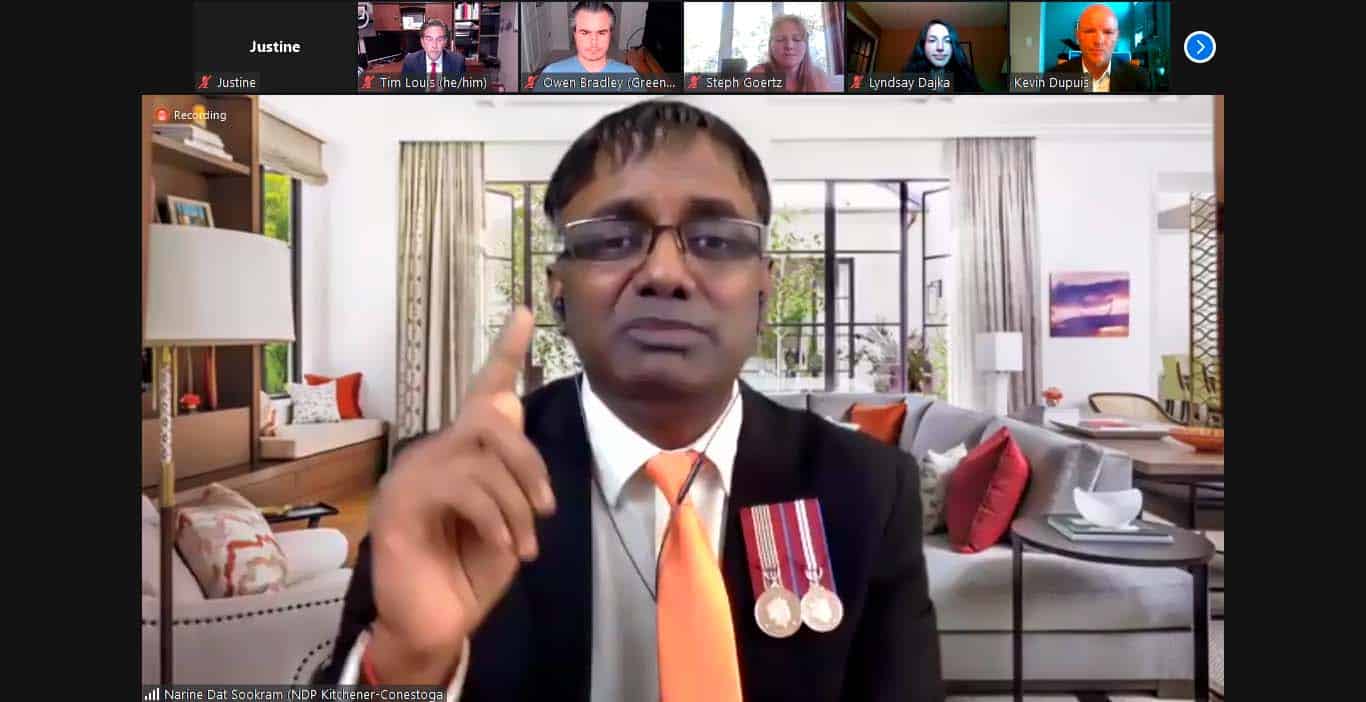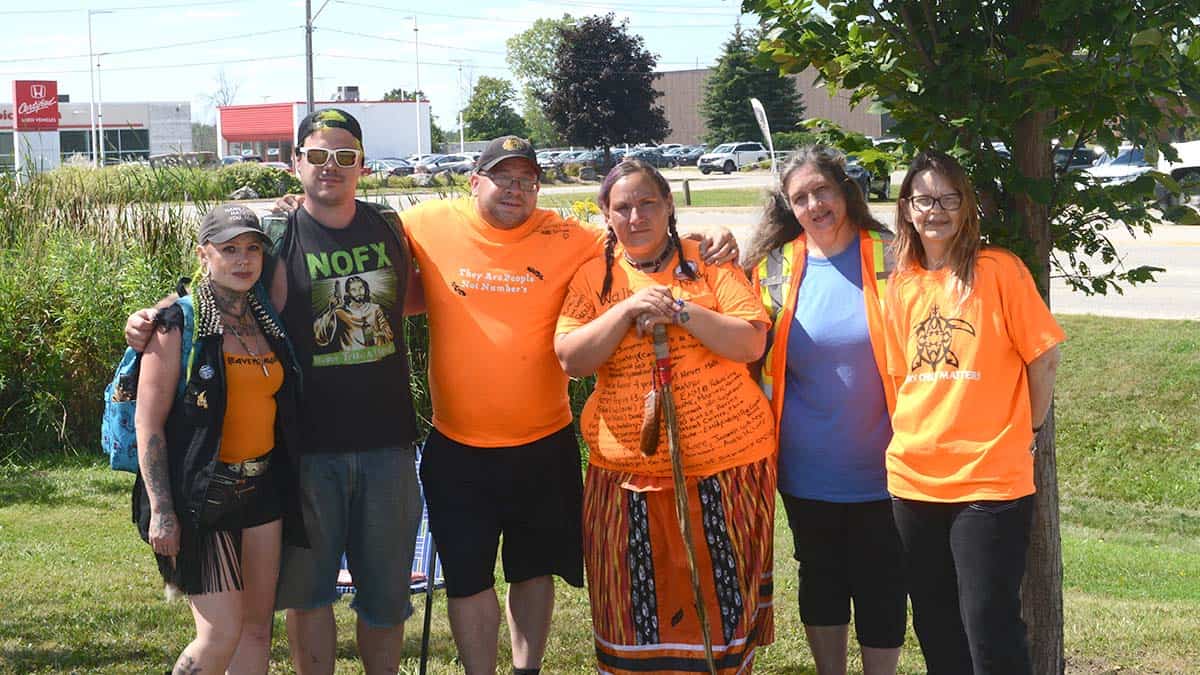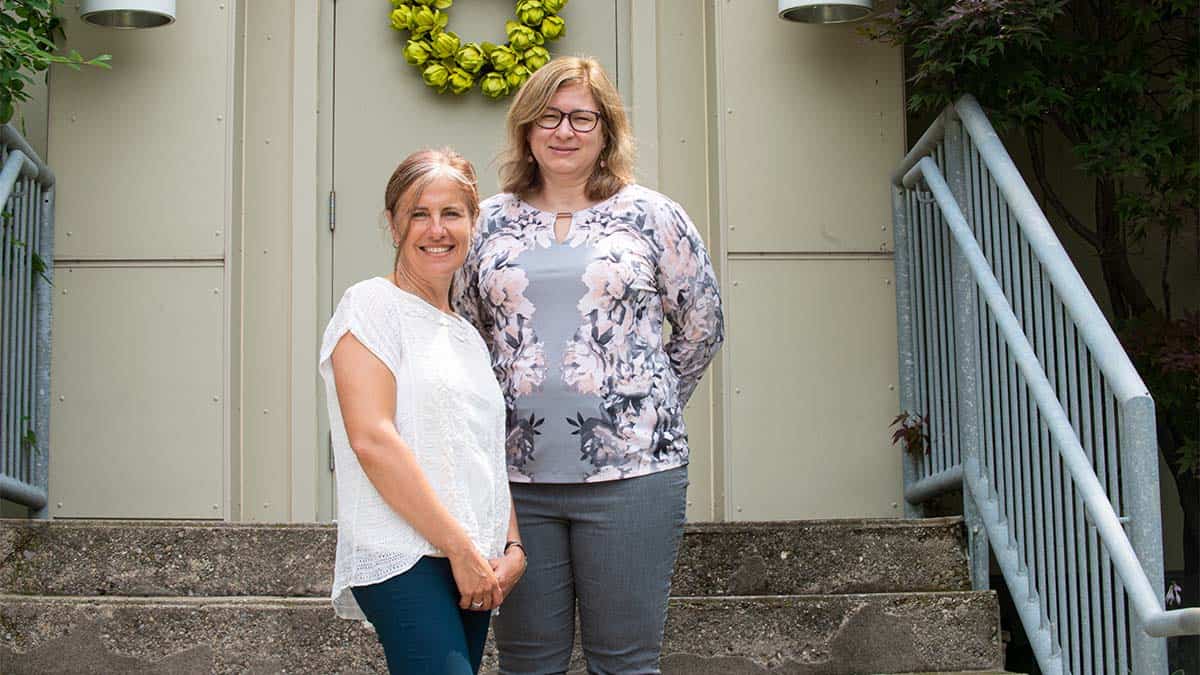That knock on the door won’t be Owen Bradley or Narine Dat Sookram. The campaigns of both the Green and NDP candidates in Kitchener-Conestoga have opted out of door-to-door campaigning due to the ongoing pandemic.
In that vein, there are also no in-person debates or meet-the-candidates events.
All told, it’s making for an unusual federal campaign, one that hasn’t gained much traction. That’s perhaps not surprising given the summertime rollout, the pandemic, back-to-school issues and a host of economic worries besetting Canadians.
While local candidates aren’t usually the central part of a federal campaign – parties and their leaders tend to be the deciding factors – this year’s election puts even more weight on what the leaders are doing, says University of Waterloo political scientist Anna Esselment.
“In some ways, it puts even more focus on the leaders,” she said of the COVID-curbed campaign. “Lots of Canadians make their vote decision just based on the performance of the leader – they don’t always know their local candidates. But in a non-pandemic campaign, usually a lot of people in the riding come into contact in some way with a local candidate. And we know through evidence that door knocking remains a key part of gathering that informal intelligence for campaigns, gauging their support levels locally.”
In federal elections, the local candidates account for about five per cent of what electors take into consideration when casting a vote, Esselment notes. The reduced opportunity for people to interact with local candidates make this election unique in that regard.
“Even where I think campaigns can go door to door – I haven’t read that it’s been prohibited – they’re very reluctant, because you don’t want to end up angering voters who might feel very strongly that they shouldn’t be at the door,” she said of local candidates’ usual method of campaigning.
“It’s a thorough disappointment. Easily my favourite part of any election is getting out and speaking to constituents,” said Bradley, who last week announced his campaign would not be knocking on doors. “
For Bradley, the shift means his campaign will be dropping off literature at people’s homes, inviting them to get in touch with the party. To date, he’s heard from people that the top-of-mind issues are the pandemic, rising cost of living and the price of housing.
The NDP’s Narine Dat Sookram is in much the same course. The campaign has been receiving feedback from the public at this point.
“The biggest issue I’m hearing from people, and based on my role as well, too, is the whole affordability piece, especially first-time homebuyers and so on – it’s extremely difficult now to really even consider owning a home or even think of owning a home. So that’s a major thing. That, and a decent job. It’s not like we don’t have jobs – there are jobs, but I think the challenging thing is finding a job that pays decent, with benefits. And issues like childcare.”
The other candidates – incumbent Liberal Tim Louis, Conservative Carlene Hawley and People’s Party candidate Kevin Dupuis – are all doing some traditional canvassing, albeit with public health protocols in place.
“So far, the campaign is going exceptionally well. I’ve had the privilege of speaking to thousands of constituents, to hear their concerns and to let them know how I will fight for them. People in Kitchener-Conestoga are ready for a change,” said Hawley in an email.









